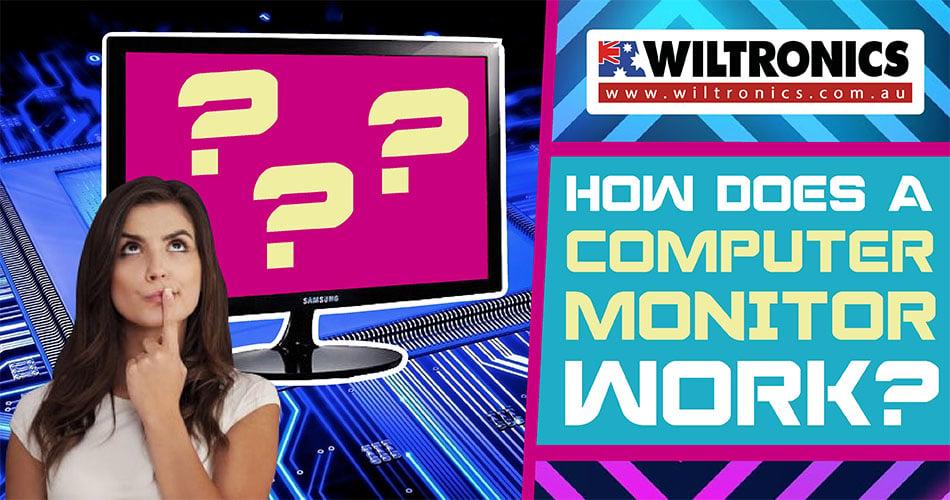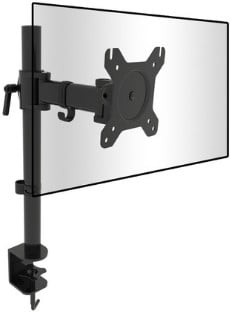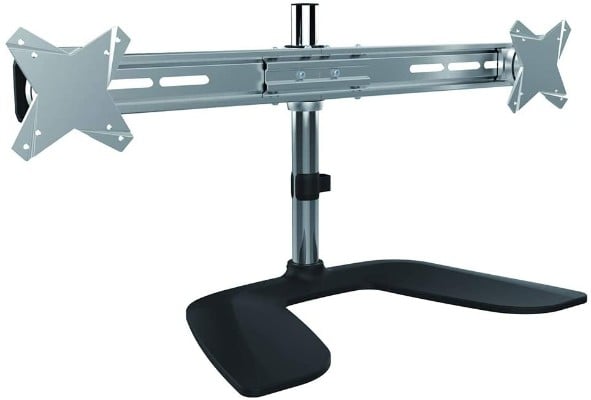Guide to Computer Monitors: Choosing Your Next Display
February 17, 2023

In your next search for a new PC display, use this guide to computer monitors as your buying companion.
Monitors are essential if you want your computer system to reach its full potential. Different types come with various features and benefits. Each is equipped to meet specific requirements and budgets. But with tons of modern models on the market, deciding which type of display is best can be complicated.
Read on as we look at all these considerations in more detail to help you determine the perfect unit for you.
Computer Monitors
Monitors are a major contribution to how desktop computers operate. We may not even realise it, but there are several things we need to understand about them.
Imagine your personal computer (PC) without one. Sure, the keyboard and mouse will still work; the same goes for the speakers and CPU. But how are you going to see what you are doing? It is impossible to get the job done without it unless you use it as a server in a network.
Computer monitors are the primary visual outputs that complete a PC setup. One enables the viewing of pictures, videos, text, and other information. It also makes working on a document, gaming and watching possible.
In a nutshell, it provides visual information which allows the user, you, to interact with the computer.
How do computer monitors work?
Do you ever wonder why your PC monitor is able to display the images and videos that you see on a daily basis?
Computer monitors use complicated technology to display content from your computer. One comes with a screen, a power supply, and a casing that holds these parts, but these are not the main features. They rely upon other components, e.g. the electronics board and LCD panel, to function fully.
Monitors work by displaying information processed by the computer’s video card. The result of the processing displayed is called output. The output provides instant feedback by showing you text and graphic images as you work or play.
Previously, computer monitors used cathode ray tube (CRT) technology. A CRT tube-type monitor utilises an electron beam to generate images on the screen. The viewing end of the tube is coated with phosphors, which emit light when struck by electrons.
In colour monitors, CRT has three guns, one for each phosphor colour. The combinations of RGB phosphors create the illusion of millions of colours.
When it comes to monochrome monitors, each phosphor is a single dot that varies in intensity. This creates a grayscale image using a series of single monochrome phosphors. To darken a phosphor dot, fewer electrons are applied to it. But vice versa for a lighter phosphor.
Types of Computer Monitors
There are three main types of computer monitors, and these are:
- CRT (Cathode Ray Tube) monitors
- LCD (Liquid Crystal Display) monitors
- LED (Light-emitting Diode) monitors
CRT is cheap, durable and has good gradation between colours. However it is dated and bulky technology (i.e. the old box monitors and televisions). LCD is lighter and more compact and tends to have better resolution. LED is a later type of monitor on the market today.
CRT (Cathode Ray Tube) monitors
This type of monitor employs CRT technology. The CRT has a large vacuum tube in the back, and is bulky but durable.
The cathode contains a heated filament which becomes an electron gun. These electron guns fire off streams of electrons. As a result, it forms images on the fluorescent screen.
CRT monitors are heavy, bulky, and costly to repair should they break. While they are still in use, you barely see them in modern settings, such as homes, offices, and businesses. Many are now opting for lighter, flatter and more reliable displays.
LCD (Liquid Crystal Display) monitors
The LCD monitor integrates one of the most advanced technologies available today. Using a liquid crystal display, it has replaced the traditional CRT monitors. One, LCD technology offers better qualities and features, such as:
- Colour
- Picture quality
- Capabilities for larger resolutions
Typically, it consists of a layer of colour or monochrome pixels. These are fixed between a few transparent electrodes and two polarising filters. The optical effect is made possible by polarising the light in varied amounts. Then, it passes through the liquid crystal layer.
A big advantage of LCD monitors is that they are compact and designed with flat panel displays. This makes them lightweight and modern looking.
LED (Light-Emitting Diodes) monitors
LED monitors are flat panels that use light-emitting diodes for backlighting. They use much less power than CRT and LCD and are far more environmentally friendly.
The LED also produces higher contrast images and is more durable even with the very thin design. The only downside is that they can be more expensive, especially for high-end LED monitors. A great example is the curved displays available on the market today.
Some other monitor types you may have heard of:
- OLED – Organic LED monitors use a layer of organic compound which emits light in response to an electrical current. OLED monitors are well know for producing superior black levels and contrast.
- QLED – Quantum LED monitors use quantum dot technology. They tend to be brighter and are not at risk of burn-in like OLEDs.
Knowing the different types of PC monitors should help you choose one that is most suited to your needs.
Specifications to Consider for Your Computer Monitor
Panel technology
The panel is what creates the image on the monitor. You have two options, and these are the TN and IPS panels.
TN panels provide faster response times and better motion performance. This makes them great for gaming monitors or video editing workstations. Meanwhile, IPS panels offer wider viewing angles. Plus, more accurate colour representation and better image quality overall.
Resolution
Your resolution preference will depend on how many pixels you like to fit into each display. Also, what type of applications it will be used display? Office apps versus multimedia presentations, for instance.
The higher the resolution, the better clarity and picture quality you will get. But with more pixels being displayed at once comes a hefty price tag as well.
Common resolutions include Full HD (1080), Quad-HD (1440) and 4K (2160).
Refresh rates
The refresh rate dictates how often new images are created on your screen per second. This is measured in hertz (Hz).
Generally, higher refresh rates provide smoother visuals but require more powerful hardware. Refresh rates usually range from 60 Hz up to 144 Hz. Or 240 Hz for high-end models optimised for competitive gaming sessions.
Connectivity options
Consider getting a model with DisplayPort 1.4+ along with HDMI 2+ ports if you have the means. Additionally, USB Type-C support for extra convenience when transferring data.
If you are going for a budget model, it may lack these features due to cost reasons. But the more input the monitor has, the better.
Size
Monitors come in different sizes, ranging from 19” to 49”. They are measured diagonally from corner to corner. The average user will be happy with 21” to 24” screens with 1080p. But if you want an even better resolution and bigger display, go for a 27” to ”38” ultrawide screen. 43” to 49” for super-ultrawide.
Bandwidth
The amount of data that can be transmitted in a period of time. It is the network’s capacity to transfer data between devices or the internet within a span of time.
Accessories for Computer Monitors
With a few extra add-ons, your monitor can do a lot more for you than just display your computer’s video signal. Desk stands and mount brackets, for instance, are useful accessories that boost ergonomics. Either can also help expand its functionality in even the tightest workspace.
Get yours from our available accessories below!

Monitor Desk Mount Bracket
Product code: JCW2874
It is time to level up your workspace ergonomics and free up your desk area! This desk mount bracket suspends your monitor above your table.
It comes with flexible clamps that connect to the edge of the desk. Also, it has an exceptional range of motion to position the display. The bracket fits most 13 to 27-inch flat-screen displays with a maximum weight of 8kg. Mounting hardware, such as VESA-compliant mounting points, is also included.

Brateck Elegant Aluminium LCD VESA Desk Stand 13-27 Inch
Product code: CM5590
This desk stand can support two monitors in a horizontal line, each with a weight capacity of 8kg. It can rotate 360 degrees, allowing for portrait and landscape viewing. Its ball-joint structure allows for smooth, effortless tilt motion in any direction.
Adjustable for height/tilt/pan and screen rotation. The solid aluminium base ensures safe application.
The Bottom Line
When setting up any computer system, one of the most important components is the monitor. For this, you need the right technology for a good viewing experience. You also want to ensure it looks great and fits your needs and personal style. May this guide help you make an informed decision on which is right for you and your budget!
This article was originally published in July 2021 and has been updated.
© Wiltronics Research Pty Ltd 2023
Write a Comment
You must be logged in to post a comment.